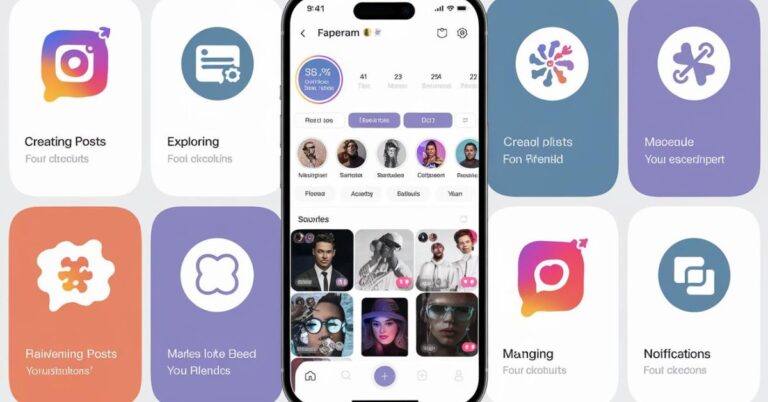How do I list skills on a resume?
When writing a resume, many job seekers focus on experience and education. However, your skills can be just as important, sometimes even more. Employers in the U.S. are increasingly hiring based on what you can do, not just where you’ve worked.
In this blog, you will learn what resume skills are and how they affect your hiring chances.
What Are Resume Skills?
Resume skills are the abilities and strengths you bring to the table. These can be learned through work, education, or even life experiences. They show an employer how you perform tasks, solve problems, or communicate with others.
There are two main types of skills:
1. Hard Skills
Hard skills are technical or job-specific. You can measure or prove them. They often require training or certification.
Examples:
- Coding in JavaScript
- Using QuickBooks for accounting
- Speaking Spanish fluently
2. Soft Skills
Soft skills are about how you work with people or adapt to situations. They can be just as valuable, especially in team-driven roles.
Examples:
- Communication
- Time management
- Adaptability
Also Read: Vin: Ys3fb79y086009255: Learn How To Decode Your Vin For Free!
Why Skills Matter in a Job Application?
Many companies now use Applicant Tracking Systems (ATS). These systems scan resumes for keywords. If your resume doesn’t include the right skills, it may never reach a human recruiter. That’s why matching your skills to the job description is essential.
Also, employers use skills to:
- Decide if you’re a good fit for their team
- Measure how fast you can learn or take on tasks
- Predict your future performance
Skill-Based Hiring Trends in the U.S.
In 2023 and 2024, employers in the U.S. started shifting more toward skills-based hiring. A report from Harvard Business Review noted that many companies removed college degree requirements and focused more on practical skills.
This trend is powerful in:
- Tech and digital roles
- Customer service and support
- Healthcare and allied services
- Entry-level business operations
How Employers Scan Resumes for Skills?
Employers look for:
- Specific keywords: Taken directly from the job post
- Proof of skills: Mentioned through achievements or tools
- Balanced skill sets: A mix of soft and hard skills
They may scan for phrases like:
- “Proficient in Excel”
- “Managed client relationships”
- “Certified in Google Analytics”
If your resume includes those exact matches placed naturally, it’s more likely to pass both ATS and recruiters.
Types of Resume Skills
Not all jobs require the same skills, and not all skills hold the same value for every employer. That’s why knowing the types of resume skills is essential. Whether you’re applying for a tech job or a teaching role, identifying the right blend of abilities can give you a competitive edge.
1. Hard Skills (Technical Skills)
Hard skills are job-specific abilities that you can learn, measure, or test. They usually come from training, certifications, or direct job experience.
Examples by Industry:
- Technology: Python, SQL, Java, Cloud Computing
- Finance: Financial reporting, Tax preparation, QuickBooks
- Healthcare: Patient care, EMR software, CPR certification
- Marketing: SEO, Google Ads, CRM platforms
- Construction: Blueprint reading, OSHA safety standards
Hard skills are the most common keywords found in job descriptions. These must be clear and tailored to each job to pass an ATS scan.
2. Soft Skills (People + Workplace Skills)
Soft skills are personal traits and behaviors that shape how you interact and solve problems. Employers value these skills just as much, sometimes more, especially in leadership or client-facing roles.
High-Demand Soft Skills:
- Communication
- Teamwork
- Problem-solving
- Adaptability
- Time management
- Leadership
These skills should show up in how you describe your achievements. Example: “Led weekly team meetings to align project goals.”
3. Transferable Skills
These are skills that apply across many roles or industries. They’re especially useful if you’re changing careers or industries.
Common Transferable Skills:
- Project management
- Research and analysis
- Public speaking
- Conflict resolution
- Data entry
Let’s say you worked in retail but want to move into HR. Skills like “handling customer complaints” easily transfer to “managing employee concerns.”
4. Creative and Problem-Solving Skills
Employers love candidates who bring solutions, not problems. Creative thinking helps you improve systems, design new strategies, or solve issues no one else has fixed.
Examples:
- Brainstorming new product ideas
- Improving team workflows
- Creating social media content from scratch
- Innovating client service processes
Include these in real examples under your job history. It gives your skills credibility.
5. Entry-Level vs Senior-Level Skills
The depth and complexity of your skills should grow with experience.
Entry-Level Skills:
- Learning quickly
- Following instructions
- Basic software proficiency
- Multitasking
Senior-Level Skills:
- Strategic thinking
- Mentoring and training
- Decision-making
- Budget management
Hiring managers want to see growth. A resume that shows skill progression makes a stronger case for promotions or leadership roles.
Where to Add Skills on a Resume?
1. Dedicated Skills Section
Most modern resumes include a skills section near the top. This makes it easy for both hiring managers and Applicant Tracking Systems (ATS) to find them quickly.
Best Practices:
- Use bullet points or grouped categories
- Limit to 8–12 of your top, job-relevant skills
- Use exact terms from the job posting
Example:
Skills
- Microsoft Excel | Data Visualization | Tableau
- Customer Service | Conflict Resolution | Team Leadership
- Email Marketing | SEO Writing | Google Analytics
This section should be clean, well-organized, and not too long.
2. Work Experience Section
Your resume becomes more powerful when you show your skills in action. The best way? Blend them into your job history. This gives each skill context and credibility.
Example:
Customer Support Specialist
XYZ Tech, Boston, MA
June 2022 – Present
- Resolved 50+ customer issues weekly using Zendesk
- Trained new team members on communication protocols
- Improved ticket resolution time by 25% in 6 months
Here, skills like communication, teamwork, and platform use are proven, not just listed.
3. Resume Summary or Objective
Your summary (or career objective for entry-level candidates) is another great place to highlight key skills, especially the ones most relevant to the job.
Example:
“Detail-oriented accounting professional with 5+ years of experience in tax preparation, financial analysis, and client communication. Skilled in QuickBooks, Excel, and GAAP compliance.”
It makes a strong impression early in the resume.
4. Education and Certifications
You can also tie skills to your academic background or professional certifications. This works well if you’re entering a new field or don’t have much work experience.
Example:
Certifications
Google Data Analytics Certificate – Coursera
- Skills gained: Data Cleaning, SQL, R Programming, Dashboard Reporting
This placement tells the hiring manager you’ve learned the skills, even if you haven’t applied them yet on the job.
5. Optional Add-Ons (Portfolios, Projects, Tools)
If the job is creative or tech-heavy, consider adding a section for:
- Tools & Software (e.g., “Figma, Canva, Trello”)
- Projects or Freelance Work
- Personal Portfolio Links (designers, developers, marketers)
These areas give more space to showcase what you can do—and how you do it.
How to Choose the Right Skills for Your Resume?
It’s not enough to list every skill you’ve learned over the years. Employers want to see only the skills that match the job they’re hiring for. This means you need to be selective and smart. Jump Resume Builder assists you choosing the appropriate skills for your resume with its selective and smart AI-powered suggestions features.
In this guide, you’ll learn how to pick the right skills that improve your chances of getting hired, especially in a U.S. job market driven by precision and relevance using Jump Resume Builder.
1. Read the Job Description Carefully
Start by reading the job post word for word. Focus on the required qualifications and preferred skills sections. These give you a roadmap.
What to look for:
- Software names (e.g., “Proficient in Salesforce”)
- Tasks and duties (e.g., “ability to manage multiple projects”)
- Industry terms or tools (e.g., “CRM platforms,” “Regulatory compliance”)
Highlight every skill-related keyword. These are the exact terms the employer—and their ATS software—is scanning for.
2. Match Skills to the Job
Once you have your list of skills from the job post, match it against what you already know or have done. Don’t list every skill you think you have. Stick to the ones you can clearly support with real-world examples.
Ask yourself:
- Have I used this skill in a job, project, or class?
- Can I show proof of this skill in my resume?
- Is this skill essential for this role?
If yes, it deserves a spot on your resume.
3. Prioritize by Relevance and Impact
Not all skills are equal. Some directly affect job performance, while others are nice-to-haves. Prioritize the ones that:
- Are listed first or repeated in the job ad
- Directly connect to the job’s main duties
- Have measurable outcomes (e.g., reduced costs, saved time, improved service)
Example: If applying for a data role, “Excel pivot tables” is stronger than “basic Microsoft Word.”
4. Use Specific, Not Generic Terms
Skip vague terms like “good communicator” or “team player.” Use clear, exact phrases. Be industry-specific when possible.
Weak:
- “Computer skills”
- “Good leader”
Strong:
- “Proficient in Google Sheets and Excel macros”
- “Managed a team of 12 field technicians across 3 states”
This makes your resume more credible and scannable.
5. Tailor for Each Application
Yes, it takes more time. However, tailoring your skills list for every job you apply to increases your odds of passing ATS filters and grabbing recruiter attention.
Create a master resume that has all your skills. Then, pull 10–12 of the most relevant ones for each job application.
6. Avoid Outdated or Irrelevant Skills
Don’t include skills that aren’t used anymore or have no connection to the job.
Skip:
- “Typing 60 WPM” (unless it’s a data-entry job)
- “Fax machine operation”
- “Basic Windows 98 knowledge”
Use current, in-demand skills. Sites like LinkedIn, Indeed, or the Bureau of Labor Statistics (bls.gov) regularly publish trending skill reports for various U.S. industries.
Conclusion
Choosing the right skills for your resume is not just about showing what you know—it’s about showing what matters most to the employer. Every job listing gives you clues. When you take time to study the job post, identify the must-have skills, and match them to your own strengths, you create a focused and relevant resume.
Generic resumes often get lost in the stack. Tailored resumes, on the other hand, rise to the top, especially when they include role-specific skills, backed by real examples. Use clear, modern terms, avoid outdated or vague phrases, and make sure each skill connects directly to the job at hand. Prioritize impact over volume. A short list of the right skills is far more powerful than a long list of the wrong ones.
In a U.S. job market shaped by digital systems and fast hiring decisions, relevance is your biggest asset. The right skills—well-placed, clearly stated, and carefully chosen—can be the difference between getting overlooked and getting hired.
————————————————————————————————————————-
Bio:
Alex Miracle is a career strategist and resume expert who specializes in helping job seekers craft resumes that align with today’s hiring standards. He collaborates with platforms like Jump Resume Builder to create tools and resources that simplify resume writing and improve job search success across the U.S. market.







